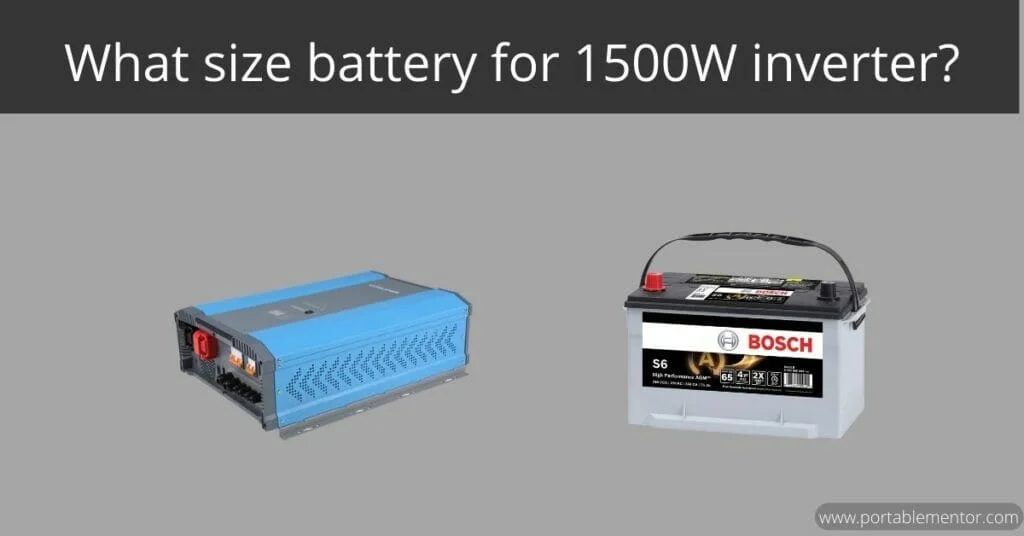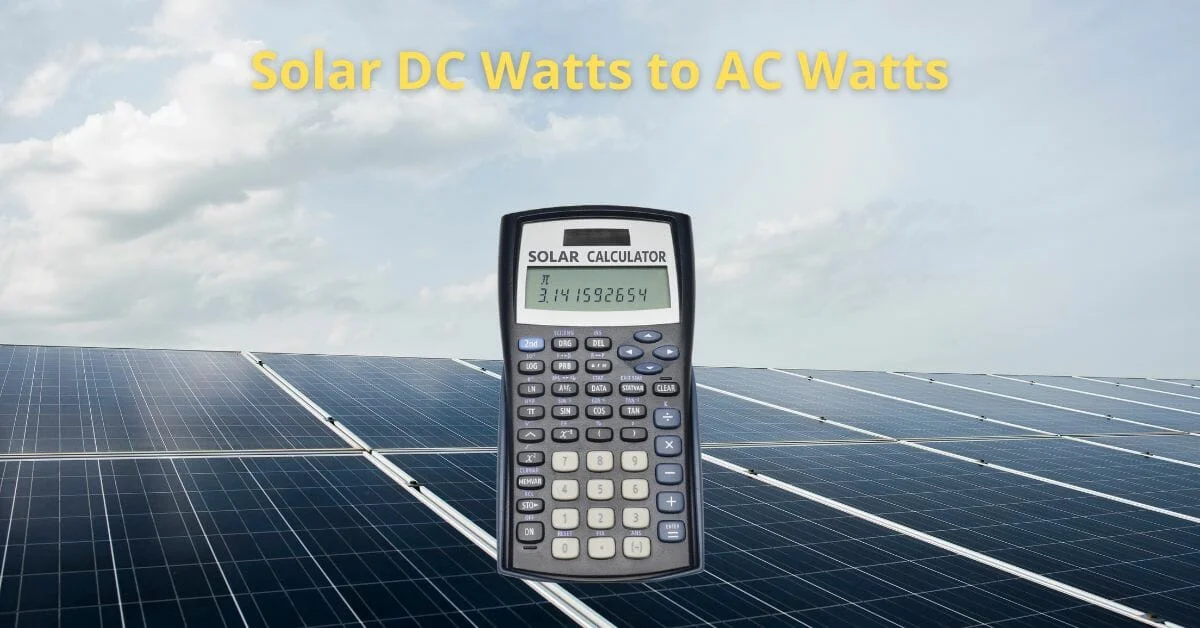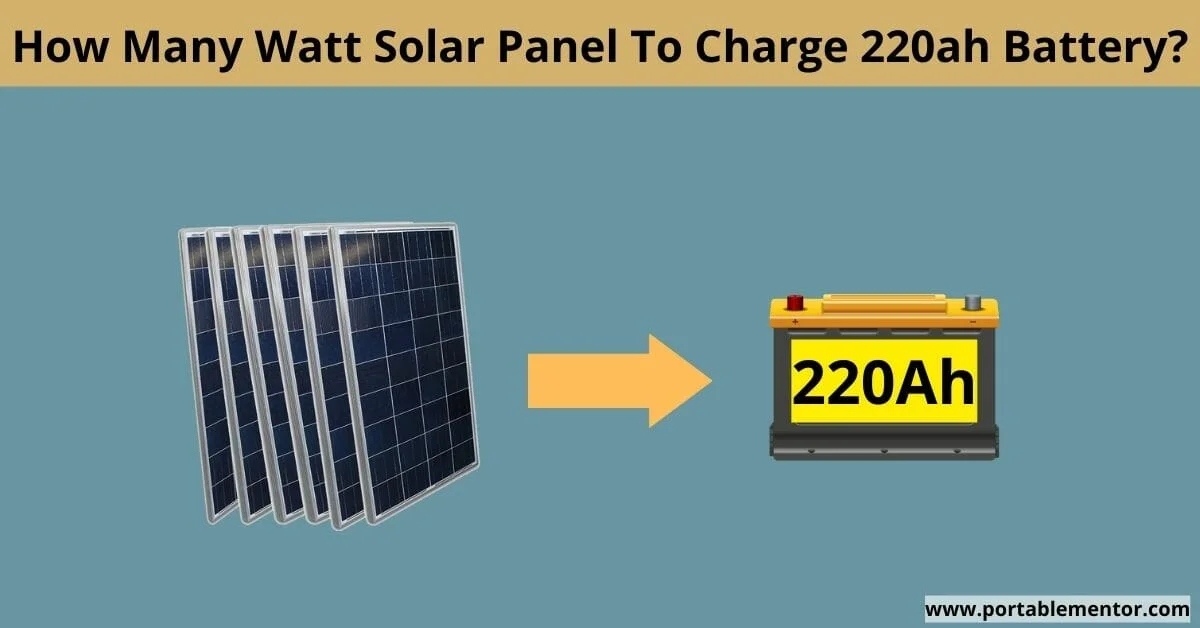
Connecting an inverter with a wrong-sized battery can limit the capacity of your inverter or it can ruin the lifespan of your battery.
Most of the blog posts are missing the very important points like C-ratings of the battery bank, current consumption, and what size cable you should use
So in this guide, you'll find out what size and voltage battery you should use with your 1500W inverter, How "many" batteries you should use (single or multiple batteries connected to each other), and also what size cable will be suitable for you.
How many batteries do I need for a 1500-watt inverter?
In short, For 1500 watt inverter you'll need two 12V 100Ah lead-acid batteries connected in series or a single 24V 100Ah lithium battery to run your 1500W inverter at its full capacity. the lead-acid batteries should be two because of their C-ratings
You must be confused that why you need a 12V or 24V battery system and also the difference between the number of batteries.
The number of batteries will depend because of the battery's C-rating. And the voltage will depend because of the amount of passing Current through wires.
Note: Connecting multiple solar panels in series will ad up their voltage
Video - Explaining Battery capacity (Ah, Wh, C-rating)
How many batteries do you need for a 1500W inverter will majorly depend on these factors
- Inverter efficiency rate
- C-Rating & Current Consumption
- Battery type / DOD limit
- Total Output/load wattage
- Run Time
Inverter efficiency rate
inverter efficiency rate is known as the conversion percentage of DC into AC. as we know that batteries store DC (direct current) so when the inverter is connected there will be some wattage loss because of the inverter efficiency rate
Most of the inverters are 85-95% efficient, which means a 1500W inverter with an 85% efficient rate will draw 1725 watts from the battery in order to run 1500 AC watts
Important Note!
But most of the experts don't recommend using your inverter at it's full capacity because it will be pulling more then it's capacity from the battery which in result will decrease the lifespan of your inverter in long run
85% efficiency rate is the standard rate right now, but few of them will come with a 90 or 95% efficiency rate do remember high efficient inverter will cost you more $$
So according to this, to keep your inverter safe and increase its lifespan the output load should not be above then 1300 watts.
Q: How many amps does a 1500W inverter use?
Calculation formula (Watts / DC Volts = Amps used by the inverter)
1500/24V = 62.5 amps
1500W inverter running at its full capacity will use/drain 62.5 amps in an hour from a battery
C-Rating & Current Consumption
The C-rating in the battery is the measurement of the current at which a battery is designed to be charged and discharged.
Most of the lead-acid deep cycle batteries have a C-rating of 0.2C and the lithium (lifepo4) battery type has a C-rating of 1C
let's take 100Ah lead-acid and lithium battery as an example
Lead-acid: 100*0.2 = 20 Amps
Lithium: 100*1 = 100 Amps
as you can see that most lead-acid batteries are designed to be discharged at 20% of their full capacity in an hour but on the other hand lithium or lifepo4 batteries are designed in a way that you can fully discharge your battery in an hour without affecting the battery lifespan or backup time
Discharging your battery at a higher rate than what is recommended will increase the heat in inner battery cells which in result will cause a power loss and also it will decrease the lifespan of your battery in the long term.
This was just a short introduction, Read this blog post for more in-depth knowledge
So if you're running a 1300 watts of load on your 1500W inverter the number of amps it will drain from the battery will be 108 amps from a 12V battery and 54 Amps from a 24V battery ( Amps = Output load (watts)/Battery Volts )
So if you have a 12V battery the inverter will drain 108 Amps or current. To pass this amount of current through wire you'll need a very thick wire which will cost you a lot of money and also there will be a chance of power current loss
that is why a 24V battery system is recommended for a 1500W inverter
Battery Type / DOD limit
DOD (depth of discharge) is known as the percentage of power that has been drained from the battery relative to the overall capacity of the battery
So battery types have a DOD limit, which means you can't discharge them below the recommended discharge limit otherwise it will decrease the lifespan of your battery, or in some cases, you won't be able to recharge your battery ever again if you fully discharge it
Here's a chart of different types of batteries with their DOD limit
| Battery Type | DOD limit |
|---|---|
| Lead-acid | 50% |
| AGM | 50% |
| Gel | 50% |
| Lithium-ion | 80-100% |
You can discharge your lithium battery by 80-100% but 80% is recommended by most manufacturers
Video - AGM vs Lithium batteries
Calculate the total output AC load
Batteries store power in DC (Direct current) or in 12 volts, but most of our household appliances require 110-220 Volts. This is why an inverter is needed which will convert the 12 volts (DC) into 110 or 220 volts (AC)
You can google or check the product description area for the running/input wattage of your device. this number will let you know how many watts of power this device will consume per hour. e.g LED TV (35W), Space heater (1500W), & Fridge (200W) etc...
We'll take a space heater as an example which requires 1500 watts of AC power.
Related Post: What will a 1500-watt inverter run?
Run Time
Run time is the number of hours you would like to run the AC load with your 1500W inverter
Let's assume that you would like to run a space heater with your 1500W inverter for an hour, so you'll need 1725 watts of power stored in your battery bank. Why 1725 watts? Because of the inverter's efficiency
How many batteries for 1500 watt inverter? - Formula
To calculate the battery size for any size inverter use this formula
Total output load (watts) * Run time (hours) = (Total Wattage required / battery volts) + 15%
The extra 15% is added because of the 85% efficiency rate of an inverter
For example, I would like to run my space heater for 2 hours
1500*2 = 3000/24 = 125
125 + 15% = 143 Amps
You'll need a single 24V 150Ah lithium battery to run a space heater with a 1500W inverter for 2 hours or two 12v 150Ah lead-acid or AGM batteries connected in series
What size of cable should I use?
Now you must be thinking that what size of wire will be suitable to connect your inverter with batteries.
Here's a chart to guide you about this

Consider inverter voltage as a battery voltage because the voltage of your inverter and battery should match.
If you're connecting a 24V battery with your 1500W inverter then make sure that your inverter also supports 24 volts. Like this WZRELB 24V 1500W inverter on Amazon
Or if you have a 12v battery or 12v inverter then you would have to invest in a good quality wire. With the help of the above wire size chart select your wire size.
How long will a 12v battery last with a 1500 watt inverter
Remember this if you're using a 12v battery with a 1500W inverter then the total load should not exceed 600 watts. At this point, your inverter will be draining 50 amps from the battery (watts/battery volts = Amps)
And also the number of batteries will depend on the type of battery which I have discussed earlier because of their C-ratings. So to run a 600W load with the help of a 1500W inverter you'll need two 12V 100Ah lead-acid type batteries or one 12V 100Ah lithium battery
You'll have to have two 100Ah lead-acid batteries in order to get the maximum output from your batteries (Because of c-ratings) but the size of the lithium battery will depend on how long you would like to run the load (Because lithium batteries can be discharged at a higher rate)
Related Posts:
1500W inverter what can it run?
What will an inverter run and for how long?
How Long Does It Take To Charge A 100Ah Lithium Battery?
Final Words
I saw this information missing from many blog posts so I decided to share it with you guys. I have you have learned something and this was helpful to you.
If you still have any queries Contact Us. Thank You.



The system has a built in circuit breaker that will trip when it comes to a brief circuit or
an overload.